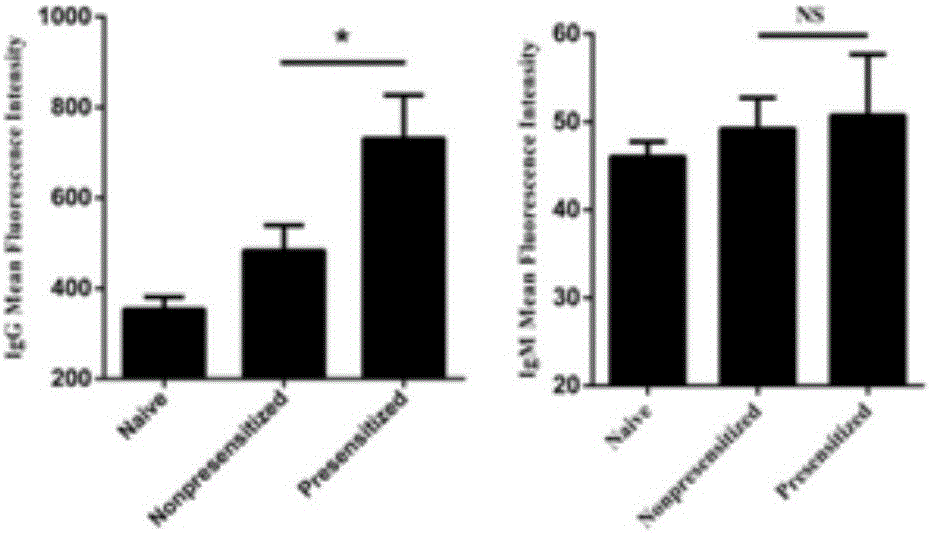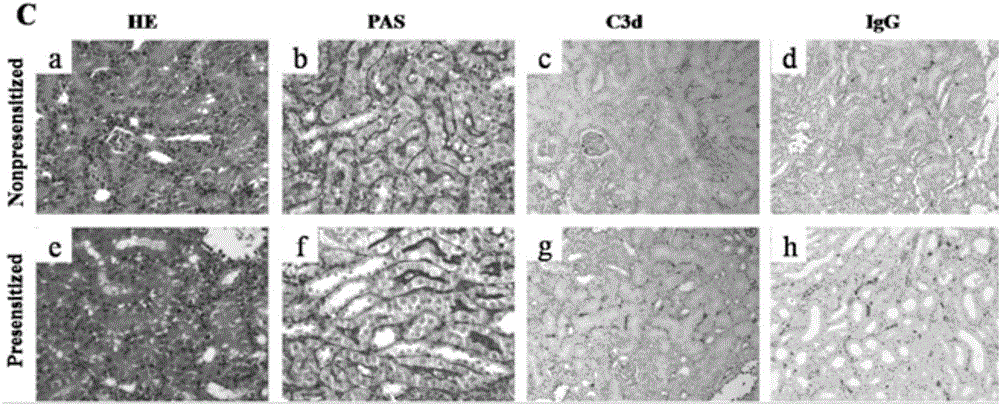Preparation method and application of regulatory T cell
A regulatory and cellular technology, applied in the field of molecular biology and biomedicine, can solve problems such as poor effect, and achieve the effect of prolonging receptor survival and alleviating acute AMR.
- Summary
- Abstract
- Description
- Claims
- Application Information
AI Technical Summary
Problems solved by technology
Method used
Image
Examples
Embodiment 1
[0087] Example 1 Initial CD4 + Sorting of cells and induction of iTreg (taking the spleen of a 5-8w BALB / c mouse as an example)
[0088] 1. Cell preparation
[0089] 1) The mouse spleen was dissected and placed in a 60mm dish filled with a 70um filter and 2mL containing 10% FBS 1640.
[0090] 2) Grind the spleen with a 1 mL syringe, rinse the remaining cells on the syringe and filter membrane with 1640 containing 10% FBS, and pipette the cell suspension into a 15 mL centrifuge tube.
[0091] 3) Centrifuge at 300g at 4°C for 5min, discard the supernatant, add 1mL of erythrocyte lysate, resuspend the cells, let stand at room temperature for 20-30s, add about 5mL of 1640 containing 10% FBS, mix well to stop the lysis.
[0092] 4) Resuspend with 2 mL of 1640 containing 10% FBS and count (usually 5w B6 get 140 million SPcells), put on ice.
[0093] 2. One-step negative selection and sorting method
[0094] 1) Resuspend the cells to 500ul with 1640 containing 10% NCS (or FBS), a...
Embodiment 2
[0108] Example 2 Establishment and Intervention of Mouse Antibody-Mediated Acute Renal Allograft Rejection Model
[0109] Anesthesia was induced and maintained with isoflurane. The operation was performed in an SPF-grade small animal operating room, and the donor and the recipient selected C3H (H-2 k ) and BALB / c (H-2 d ) mice. For skin transplantation, the skin of the tail of the donor is transplanted on the back of the recipient, with a size of about 1x1cm. Kidney transplantation was performed 4 days after skin transplantation. The method of kidney transplantation was based on international reports and our improved method. The artery was sutured with 12-0 non-damaging nylon monofilament suture (Ningbo Lingqiao, Ningbo Medical Suture Needle Co., Ltd.) with 6 intermittent stitches, and a small segment of the donor renal artery was anastomosed end-to-side with the recipient abdominal aorta. The vein was anastomosed continuously with 12-0 nylon suture, and the donor renal ve...
Embodiment 3
[0110] Example 3 Pre-sensitization of skin transplantation to establish antibody-mediated mouse model of acute renal allograft rejection
[0111] In this model, we used C3H mice as donors and BALB / c mice as recipients. Kidney transplantation was performed on the 4th day after skin transplantation presensitization, as the presensitized group (presensitized); no presensitized skin transplantation Sensitized as a non-sensitized group (nonpresensitized). The survival of transplanted kidneys was observed, and the level of DSA in serum and histological manifestations at specific time points were detected. ) The survival curves of the pre-sensitized group and the non-sensitized group are as follows figure 1 Shown (comparison of the two survival curves, ** p figure 2 Shown (the difference in IgG level between the pre-sensitization group and the non-sensitization group was statistically significant ( * p0.05)); the transplanted kidney specimens were obtained on the 5th day after ren...
PUM
 Login to View More
Login to View More Abstract
Description
Claims
Application Information
 Login to View More
Login to View More - R&D
- Intellectual Property
- Life Sciences
- Materials
- Tech Scout
- Unparalleled Data Quality
- Higher Quality Content
- 60% Fewer Hallucinations
Browse by: Latest US Patents, China's latest patents, Technical Efficacy Thesaurus, Application Domain, Technology Topic, Popular Technical Reports.
© 2025 PatSnap. All rights reserved.Legal|Privacy policy|Modern Slavery Act Transparency Statement|Sitemap|About US| Contact US: help@patsnap.com



